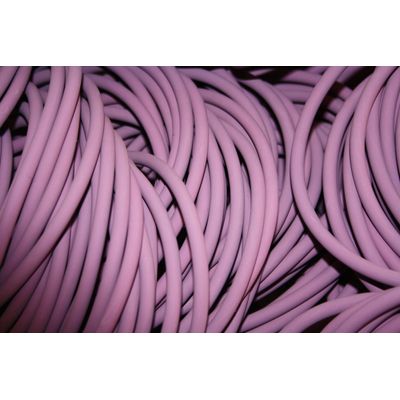

- Home
- Companies
- Alwin Höfert KG
- Products
- Höfert - Extruded Cord Rings for Static ...

Höfert - Extruded Cord Rings for Static Sealing Applications
Round cord rings are utilized when appropriate O-ring shapes are unavailable, and the production of custom tooling is not cost-effective due to low volume requirements. Unlike molded O-rings, these rings are formed from extruded cord material which can be cut to any specific inner diameter and assembled via splicing or butt vulcanization to meet DIN 7715 standards. Over recent years, vulcanization has become preferred due to its superior physical properties compared to adhesive bonding, albeit the joints possess lesser mechanical strength compared to the original extruded cord. Therefore, these types of rings are not suitable for dynamic sealing, vacuum, or gaseous media applications. The dimensional deviations for cord diameter adhere to DIN 7715 Part 3, Class E2, with circumferential tolerances of ±0.8 percent. Standard O-ring tolerances do not apply. Since 1963, Alwin Höfert KG has been producing quality O-rings and special seals, providing German-made excellence to its clientele.
Round cord rings are often used in cases where suitable O-ring molds are not available and the small number of pieces means that tool production is not feasible for cost reasons.
In contrast to molded O-rings, round cord rings are made from extruded cord and assembled to any desired inner diameter by bonding or butt-vulcanizing. In recent years, however, bonding has largely been discontinued, as the butt-jointed round cord according to DIN 7715 has become increasingly popular, among other things due to its better physical properties. However, the vulcanization point here also has lower mechanical properties than the extruded cord. Therefore, round cord rings should not be used for dynamic seals, vacuums, or gaseous media. The dimensional tolerance for the cord diameter is according to DIN 7715 Part 3, Class E2, and for the circumferences, ± 0.8 percent. The O-ring tolerances are not applicable.
Tolerances for cross-sectional dimensions (cord diameter D2) : DIN 7715 Part 3 E2 Tolerance ±
- up to 2.50 mm : ± 0.35 mm
- 2.50-4.00 mm : ± 0.40 mm
- 4.00-6.30 mm : ± 0.50 mm
- 6.30-10.00 mm : ± 0.70 mm
- 10.00-16.00 mm : ± 0.80 mm
- 16.00-25.00 mm : ± 1.00 mm
